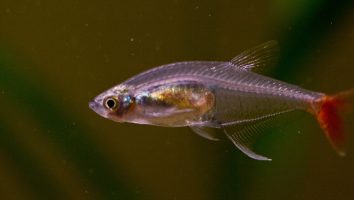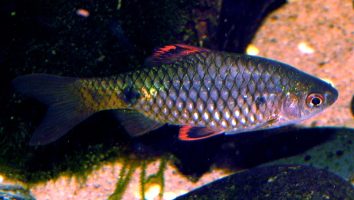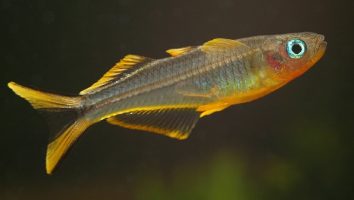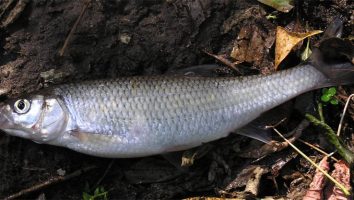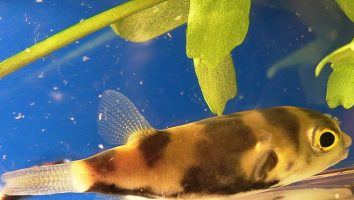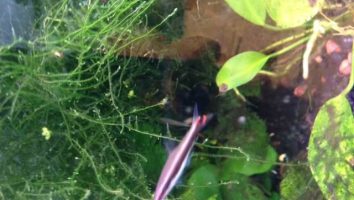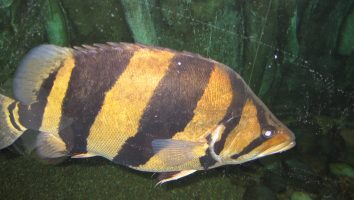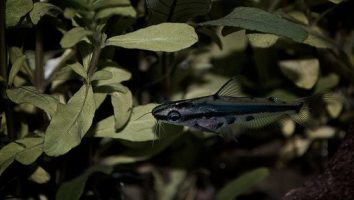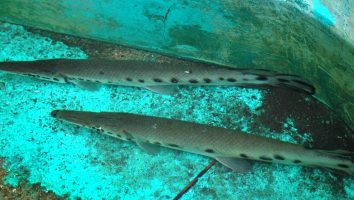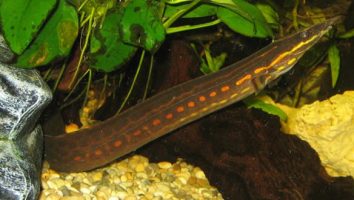The Rosy Red Minnow is a freshwater fish that is very popular in the aquarium trade.
This fish is native to the United States and can be found in a variety of different habitats.
They are very easy to care for and make a great addition to any freshwater aquarium.
In this guide, we will go over everything you need to know about Rosy Red Minnow care. We will cover their diet, tank size, lifespan, and more!
Table of contents
Species overview
Rosy red minnows (Phoxinus eos) are small freshwater fish that are native to parts of the United States. They are most commonly found in the Mississippi River basin but have also been spotted in the Great Lakes region.
Rosy red minnows are a very peaceful fish and do well in community tanks. They are not aggressive and get along with other fish well.
These fish are very easy to care for and are a good choice for beginner aquarium hobbyists. They are hardy and can tolerate a wide range of water conditions.
The main appeal of rosy red minnows is their unique coloration. These fish are bright pink or red all over their bodies, which makes them stand out in any aquarium.
Appearance
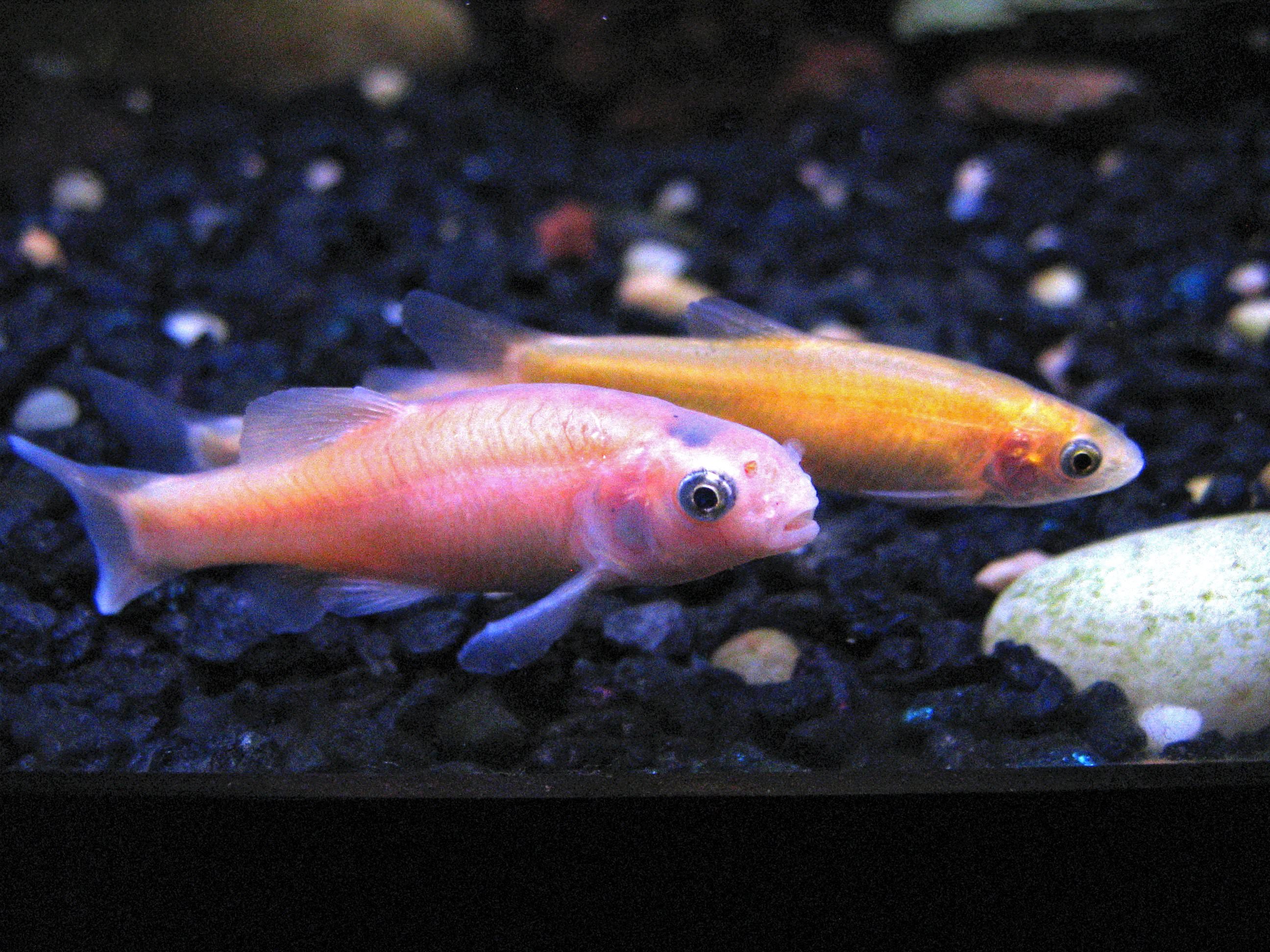
The Rosy Red Minnow is a small freshwater fish that is easy to care for. As their name suggests, these fish are a beautiful rosy pink color.
The body of the Rosy Red Minnow is rather elongated and slender. They have a small dorsal fin that is set back towards the tail of the fish.
Their anal fin is small and rounded and their caudal fin is forked. Both the dorsal and anal fins have a dark line running along the edge.
The Rosy Red Minnow has a small mouth that is slightly downturned. This helps them to easily pick up small bits of food off the bottom of the tank.
These fish are very peaceful and make a great addition to any community tank.
Lifespan
2 to 4 years
Size
Rosy red minnows only grow to be about 2.5 inches in length when fully grown. However, they are very slender fish, so they don’t need a lot of space to swim around.
Tank
Tank Size
Rosy red minnows can grow to be quite large, up to 4 inches long, so they need a bit of room to swim. A 20 gallon tank is the minimum size we would recommend but if you can go larger, 30 gallons or more, that’s even better.
As with any fish, the more space you can provide the better. If you have the room, a 40 or 50 gallon tank would be ideal.
Water Parameters
Rosy red minnows are a freshwater fish that are part of the carp family. They are native to the Mississippi River basin in North America. In the wild, they can be found in slow-moving streams, ponds, and lakes with a sandy or muddy bottom.
Rosy red minnows are not demanding when it comes to water conditions and can adapt to a wide range of parameters. However, they prefer waters that are on the cooler side with a neutral to slightly acidic pH.
Here are a few guidelines to help you create a rosy red minnow-friendly environment.
- Water temperature: 60 to 75 degrees Fahrenheit
- pH levels: 6.5 to 7.5
- Water hardness: 5 to 15 dGH
- Alkalinity Levels: 4-8 dKH
What To Put In Their Tank
Rosy red minnows are one of the most popular fish for beginner aquariums. They’re easy to care for, peaceful, and can be kept in a wide range of tank sizes.
The key to success with these fish is to keep them in a school. This means you’ll need at least six of them (preferably more). They’re social creatures that do best when they’re around others of their own kind.
As for what to put in their tank, the options are endless. These fish aren’t picky and will do well in most environments.
We recommend a sandy substrate with some rocks and driftwood for decoration. You can also add plants if you’d like, but be aware that these fish will likely uproot them.
Common Diseases
Rosy red minnows are quite hearty fish. They don’t often get sick and can tolerate a wide range of water conditions.
However, that doesn’t mean they’re immune to disease. The most common ailment that these fish experience is ich.
Ich is a parasitic infection that will present itself as white spots on the body of your fish. If left untreated, it can be fatal.
Fortunately, ich is relatively easy to treat. There are a number of different methods that you can use, and most of them are quite effective.
The best way to prevent ich (or any other disease) is to maintain good water quality in your tank. A clean and stable environment is always the best way to keep your fish healthy.
Behavior & Temperament
Rosy red minnows are not known for being shy. In fact, these fish are quite the opposite. They’re social creatures that enjoy being around others, especially their own kind.
You’ll often see them swimming and schooling together in groups. It’s not uncommon for them to form a tight-knit community in the wild. So, if you’re keeping them in captivity, it’s important to provide them with enough space to move around and socialize.
Rosy red minnows are also known to be quite hardy. They can withstand a wide range of water conditions and temperatures. This makes them a great choice for beginner aquarists.
When it comes to temperament, these fish are relatively peaceful. They’re not known to attack other creatures unless they feel threatened. Even then, their bites are more like nips.
Tank Mates
Rosy red minnows are peaceful community fish that get along well with other docile species. They’re not aggressive and won’t bother other fish in the tank.
In terms of compatibility, rosy red minnows do best with fish that occupy different areas of the tank. For example, you could add bottom-dwelling fish like corydoras or loaches.
You could also add mid-level swimmers like danios or barbs.
And don’t forget about surface dwellers like hatchetfish or glassfish.
Here are some compatible rosy red minnow tank mates to consider:
- Cherry Barb
- Golden Barb
- Zebra Danio
- Leopard Danio
- Clown Barb
- Rosy Barb
- White Cloud Mountain Minnow
- Neon Tetra
- Cardinal Tetra
- Ghost Shrimp
Breeding
Rosy red minnows are incredibly easy to breed. In fact, they practically do it on their own.
To start, set up a breeding tank. It should be at least 10 gallons in size. Then, add a layer of gravel to the bottom and some live plants. Rosy red minnows like to hide in the plants, so make sure there are plenty.
Fill the tank with clean water. Rosy red minnows are very sensitive to water quality, so make sure the water is well-filtered and properly cycled.
When ready, add six to eight rosy red minnows to the breeding tank. It’s best to have more females than males. These fish are livebearers, so they will give birth to live young.
Within a few weeks, you should see the females start to swell with eggs. That’s when you know they’re ready to breed.
The gestation period for rosy red minnows is only 21 days. So, it won’t be long before the fry are born.
When they are born, the fry will be fully-formed and able to swim on their own. They will hide in the plants and feed on microscopic organisms in the water. You can supplement their diet with baby brine shrimp or finely-crushed flake food.
Rosy red minnows are very easy to care for and breed. With some patience, you can have a whole tank full of these beautiful fish.
Conclusion
The Rosy Red Minnow is a great beginner fish for those looking to get into the hobby. They’re easy to care for and are very tolerant of a wide range of water conditions.
They’re also a very peaceful fish, so they’re perfect for community tanks.
Overall, we think the Rosy Red Minnow is a great fish for beginner aquarists and would highly recommend them to anyone looking to get started in the hobby!

